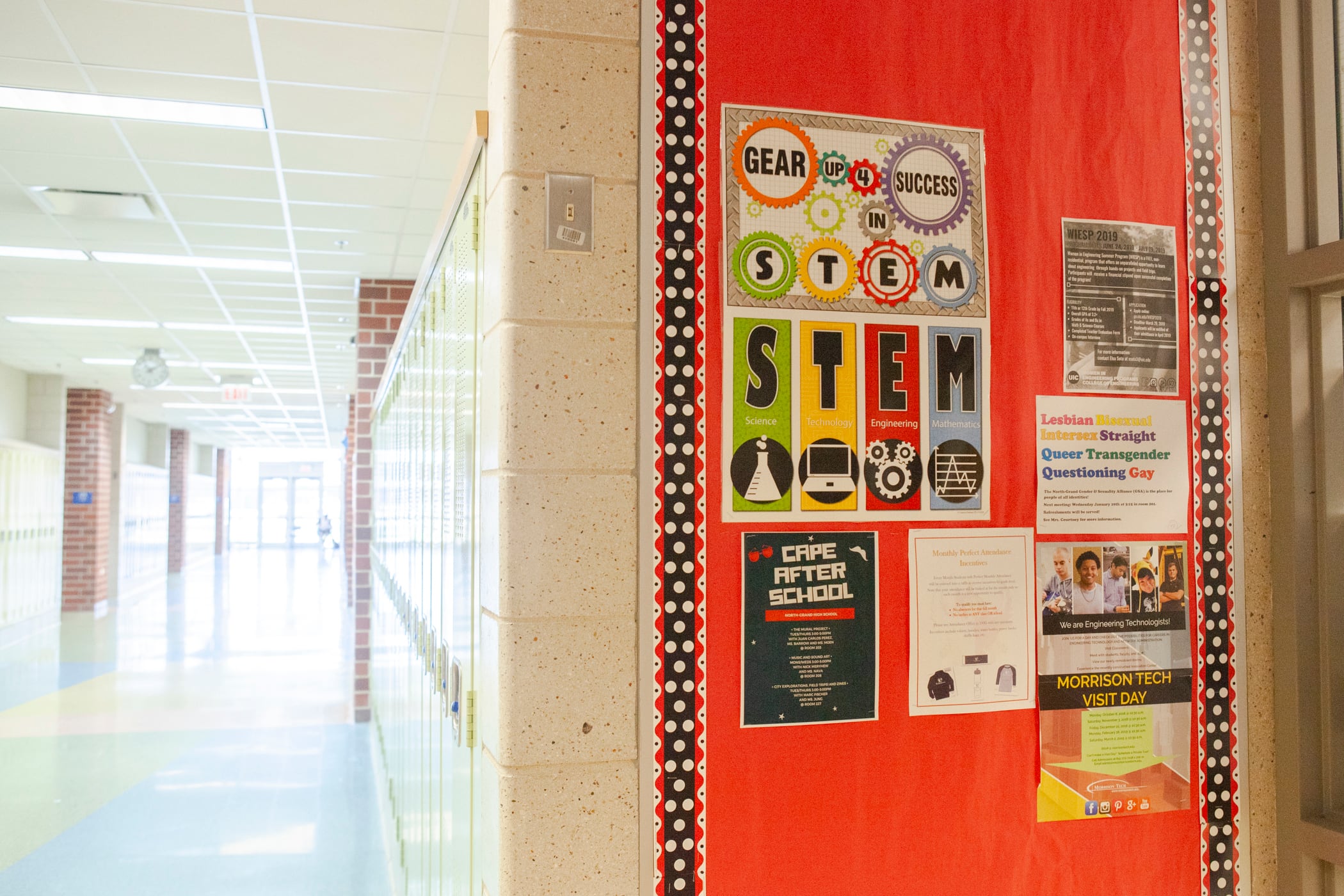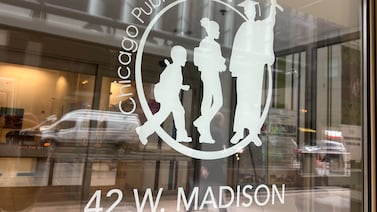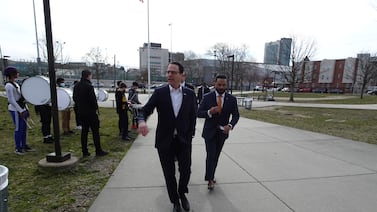As middle school students return to Chicago school buildings for the first time this week, the district is ramping up a key element of its school safety plan: COVID-19 testing for students.
That effort — which officials say they expect to begin rolling out late next week — is part of a broader public health strategy the district is implementing now that schools are open, including an online health screener, in-school temperature checks, a new contact tracing team, and regular testing of teachers.
The goal will be to test symptomatic students or those who had close contact with a person who tested positive for the virus, and to use surveillance testing to catch students who may be asymptomatic.
A plan to test students at schools in areas with the highest COVID-19 rates was a cornerstone of the city’s hard-won reopening agreement with its teachers.
Here’s what we know about the program so far:
In-school student testing was not part of the district’s original plans
Broad-based COVID-19 testing for students without symptoms wasn’t on the table when Chicago put forward its initial plan to reopen schools last summer. But amid rising cases and growing evidence that a portion of people with COVID-19 showed no symptoms, the Chicago Teachers Union made some level of random testing a central part of its campaign for a written agreement on school reopening.
What it won also met another of the union’s key concerns — more support for schools that would reopen in areas with high COVID-19 rates.
According to the district’s reopening agreement with the union, all students and employees with coronavirus symptoms will be offered a test. In addition, the district will offer weekly tests to 25% of students age 10 or older, along with all employees, in schools in the 10 city ZIP codes with the highest COVID-19 rates.
It will also offer tests to employees and students age 10 or older newly returning to school buildings in those ZIP codes. The ZIP codes will be reviewed on a monthly basis as COVID-10 rates fluctuate according to data from the city’s COVID-19 dashboard.
The district will also offer surveillance testing to all high school students in programs for children with moderate to severe disabilities.
Surveillance testing is only for students 10 and over
While students of all ages can be tested in case they are symptomatic or have been exposed to someone with COVID-19, the district’s surveillance testing will only be conducted for students age 10 or older, according to the reopening agreement with the union, until there is a more commercially viable test for younger children.
Students will receive a PCR test
Students tested in school will receive a molecular PCR test that takes two to three days for results, according to the district, and will be administered by medical professionals hired by a vendor to visit schools.
Students won’t be expected to quarantine during this time unless they have symptoms, according to information shared at the district’s “Ask the Expert” event last week.
Student testing will be voluntary
Parents must give their consent for a student to be tested, and will be asked to fill in a consent form before a test is given. Families can decline to take a COVID-19 test requested by the school, but if a student has symptoms, they will be sent home. For asymptomatic cases, the district has said that its masking and social distancing measures should help prevent the broader spread of infection inside school buildings.
Student testing can be a contentious issue
While Chicago’s student testing system is only in its initial stages, concerns about privacy and safety around testing have made it a hot button issue in other districts.
In New York City schools, weekly, random testing for the coronavirus has been a requirement for 20% of students and staff at all schools since December. The state later said that districts could not require students to consent to testing, throwing the city’s protocol into question before reversing course.
Guidance from the Illinois State Board of Education says symptomatic students should take a COVID-19 test. If they decline, they should stay home for 10 days from the date of their first symptom.







